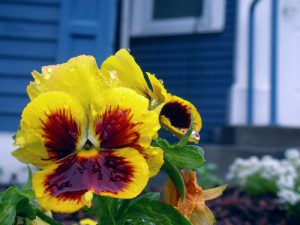Celebrations
Over the years our community has adopted a tradition of celebrating the changes of the seasons. These are called nyida days, from the Tibetan words nyima (“sun”) and dawa (“moon”). Nyida days occur on or near the days of the equinoxes and solstices. All four nyida days are regarded as family-oriented celebrations:
- Shambhala Day – the lunar New Year
- Midsummer’s Day – the summer solstice
- Harvest of Peace – the autumn equinox
- Children’s Day – the winter solstice
There are also other opportunities to gather and celebrate through the year, at the centre and in the Deleks, neighbourhood groups. Family activites, including rites of passage for children, take place during the year.
A day of meditation and reading songs of meditative realization from the lineage occurs on Milarepa Day, a celebration of the life example of Milarepa.
For more information, please contact us. All are welcome!
Shambhala Day
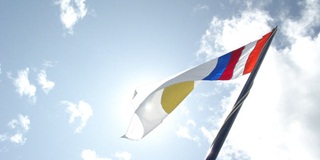 Shambhala Day is a celebration of the New Year and is an important holiday of the Shambhala Community. The date is based on the lunar calendar and is in accordance with the new year of the Tibetan calendar. Shambhala Centres around the world gather together via a telephone or computer link to hear an address by Sakyong Mipham Rinpoche, usually from Halifax. The traditional blessing that concludes the formal event is followed by festivities with family, friends and neighborhood (delek) groups.
Shambhala Day is a celebration of the New Year and is an important holiday of the Shambhala Community. The date is based on the lunar calendar and is in accordance with the new year of the Tibetan calendar. Shambhala Centres around the world gather together via a telephone or computer link to hear an address by Sakyong Mipham Rinpoche, usually from Halifax. The traditional blessing that concludes the formal event is followed by festivities with family, friends and neighborhood (delek) groups.
Midsummer’s Day
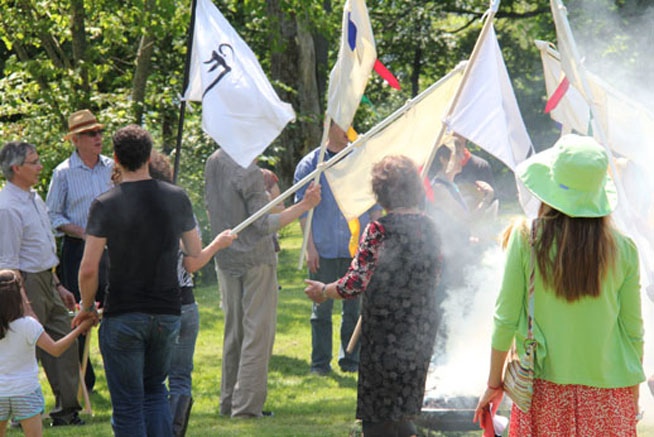 Midsummer’s Day is a celebration of the nyida day associated with the summer solstice. The day often begins with a lhasang (a traditional offering of juniper smoke) that purifies the environment and invokes awakened energy. This gathering is an opportunity for families and friends to enjoy summer fun together. The day may include picnics, swimming and boating, outdoor sports, and music and dance performances.
Midsummer’s Day is a celebration of the nyida day associated with the summer solstice. The day often begins with a lhasang (a traditional offering of juniper smoke) that purifies the environment and invokes awakened energy. This gathering is an opportunity for families and friends to enjoy summer fun together. The day may include picnics, swimming and boating, outdoor sports, and music and dance performances.
Harvest of Peace
 “…when we say, “harvest of peace,” here, it is peace within ourselves- We feel like we belong, we feel like we actually want to participate in the community. That sense of peace in us is what is going to make a big difference. Not meditative stabilization and peace, we’re not particularly talking about that. But a sense of harmony. If we feel a sense of harmony with ourselves and the community, it’s going to naturally express itself. I feel that that is going to be one of the important binding factors.” Sakyong Mipham Rinpoche, Harvest of Peace address 1999 The Harvest of Peace, around the time of the autumn equinox, is an opportunity for local communities to gather, hear teachings by Sakyong Mipham Rinpoche, and celebrate the riches of our local cultures and heritage. The Sakyong addresses the international community through a live broadcast delivered through a telephone link with Shambhala Centers around the world.
“…when we say, “harvest of peace,” here, it is peace within ourselves- We feel like we belong, we feel like we actually want to participate in the community. That sense of peace in us is what is going to make a big difference. Not meditative stabilization and peace, we’re not particularly talking about that. But a sense of harmony. If we feel a sense of harmony with ourselves and the community, it’s going to naturally express itself. I feel that that is going to be one of the important binding factors.” Sakyong Mipham Rinpoche, Harvest of Peace address 1999 The Harvest of Peace, around the time of the autumn equinox, is an opportunity for local communities to gather, hear teachings by Sakyong Mipham Rinpoche, and celebrate the riches of our local cultures and heritage. The Sakyong addresses the international community through a live broadcast delivered through a telephone link with Shambhala Centers around the world.
Children’s Day
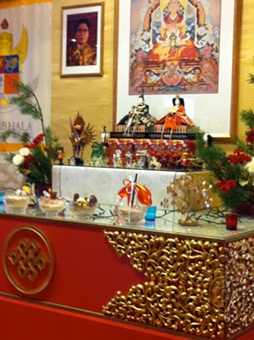 Children’s Day is held on December 21st, the winter solstice. While all four nyida days are family-oriented occasions, the winter holiday, Children’s Day, provides a special opportunity to express appreciation for and with our children. At a time when the weather begins to bear down upon us , we turn to family for celebration, creativity, and generosity. Because the solstice marks the time of year when daylight has waned and the night is longest, light is a special characteristic of this holiday. At a time when darkness is prevalent, we celebrate our children and their natural ability to remind us of the warmth, heart, and cheerfulness of basic goodness. Celebration of the winter solstice has its roots in many different cultures. The Shambhala Community has drawn on traditional images associated with this time of year to create a distinctive and rich festival of our own.
Children’s Day is held on December 21st, the winter solstice. While all four nyida days are family-oriented occasions, the winter holiday, Children’s Day, provides a special opportunity to express appreciation for and with our children. At a time when the weather begins to bear down upon us , we turn to family for celebration, creativity, and generosity. Because the solstice marks the time of year when daylight has waned and the night is longest, light is a special characteristic of this holiday. At a time when darkness is prevalent, we celebrate our children and their natural ability to remind us of the warmth, heart, and cheerfulness of basic goodness. Celebration of the winter solstice has its roots in many different cultures. The Shambhala Community has drawn on traditional images associated with this time of year to create a distinctive and rich festival of our own.
Milarepa Day
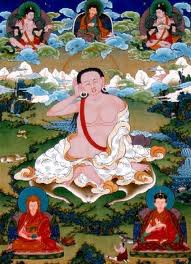 Milarepa Day celebrates the enlightenment and life example of Milarepa, one of Tibet’s most famous yogi-practitioners. The celebration involves a full day of practice, and includes chanting the Milarepa sadhana and reading the songs of the lineage teachers in The Rain of Wisdom.
Milarepa Day celebrates the enlightenment and life example of Milarepa, one of Tibet’s most famous yogi-practitioners. The celebration involves a full day of practice, and includes chanting the Milarepa sadhana and reading the songs of the lineage teachers in The Rain of Wisdom.


